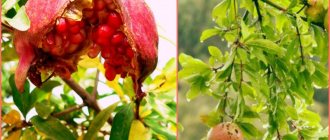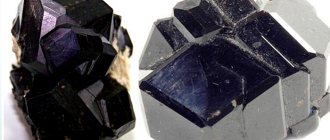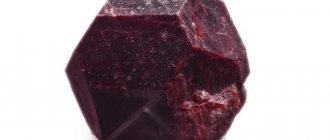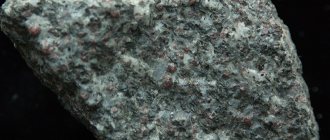What is a pomegranate tree: the meaning of the name
Pomegranate is a fruiting shrub or tree.
Its generic name comes from the Latin word "punicus", meaning Punic. The specific name comes from the word “granatus” , which translates as granular, due to the many juicy grains inside the fruit.
In the Middle Ages, the pomegranate was called the seed apple (Pomum granatum). The ancient Romans gave it the name granular apple (malum granatum). This fruit is called an apple in different languages: Italians – melograno, Germans – Granatapfel.
In the old days, the pomegranate was called the royal fruit, because of the shape of its upper part , which resembles a crown, as well as for its healing properties, which can help in the treatment of certain diseases.
The Greeks called the pomegranate the “fruit of happiness.” They had the custom of throwing these fruits at the feet of newlyweds so that their family would be rich and abundant, just as it is filled with sweet pomegranate seeds.
Classification
Systematic position of the genus
Traditionally, the genus Garnet was placed in its own family Punicaceae
[5].
Later studies proved that the genus would be more correctly placed in the family Lythraceae ,
which was done within the framework of the APG classification.
Kinds
There are only two species in the genus [6] Punica granatum - the common pomegranate and Punica protopunica Balf. - Socotra pomegranate, or protopunica pomegranate, is endemic to the Yemeni island of Socotra, distinguished by pink rather than red flowers and less sweet and large fruits.
History of selection and appearance of pomegranate
Mention of the pomegranate is present in Ancient Greek mythology. In these works, the fruit was presented both as a symbol of abundance and immortality, and as a sign of oblivion and death. Since ancient times, this fruit crop has been found throughout the Mediterranean coast.
Residents of Ancient Greece were sure that the pomegranate fruit was created from the blood of Dionysus, the god of wine. For Christians, the pomegranate fruit was a symbol of resurrection and was associated with the image of the Virgin Mary. Many ancient paintings depict the Virgin Mary and the baby Jesus holding a magical fruit in their hands. After research, scientists suggested that the birthplace of the pomegranate tree could be Persia (Iran).
Today the plant is widespread in the Caucasus, Asia, Iran, Afghanistan, Central Asia and other countries with tropical and subtropical climates, as well as throughout the Mediterranean. The plant was brought to Crimea by the Greeks.
Medicinal properties
Garnets are popular among lithotherapists - people who heal with natural minerals. They note that the shade changes the properties of the mineral.
Reds primarily affect the cardiovascular system and everything related to blood. They also give vigor, so they are indispensable for weakness and loss of strength. In Rus' they believed that red pomegranate helps women in labor, facilitating childbirth. Hindus even now consider this mineral an excellent helper for supporting immunity.
The property of pyrope and almandine to heal wounds, restore damage, relieve inflammation and fever is highlighted.
Transparent, colorless stones are used to treat mucous membranes. They are used for diseases of the digestive system, ulcers, gastritis. Green pomegranates are best for normalizing the nervous system. They have also been shown to improve sleep and ensure lymphatic drainage. Shades of yellow and brown are valued in lithotherapy for their ability to treat skin problems: rashes, burns, bruises.
The properties of garnets are best demonstrated if they are worn near the heart in the form of pendants, necklaces, and pendants. The most harmonious setting for a gem is silver.
Botanical characteristics, description and photo
This plant belongs to the dicotyledonous class, the loosestrife family, the pomegranate subfamily, the genus pomegranate.
Bush or tree?
The pomegranate may look like a tree with a branched crown, but is more often found in shrub form. A deciduous plant growing to a height of 5-6 m . The lifespan of a pomegranate can reach up to 100 years.
What does the plant look like?
The pomegranate root system is superficial, well branched, growing in all directions.
The plant is not picky about soil, but feels better on organic-rich, loamy, permeable soils. Its branches are thin, but despite this they can bear heavy fruits. At the end of one-year-old shoots there are thorns. The leaves are small, smooth, glossy, have an elongated oval shape, and are collected in small bunches.
Flowers
The flowers are funnel-shaped, the flower size is from 2.5 cm . Pomegranate flowers can be pitcher-shaped, bisexual, with a pistil and anthers, on which fruits are then formed. There are also bell-shaped flowers - these are barren flowers that do not have ovaries. There are also flowers of intermediate forms. The calyx of the flower consists of 5-7 fleshy triangular parts, leathery. The stamens and petals are attached to the calyx itself.
From the large buds that appear on the current year's growths, delicate flowers of rich colors bloom: scarlet, pink, purple, white, pale yellow, red with a white border, both simple and double, but not emitting a fragrance.
Pomegranate blossoms are abundant and long-lasting, beginning in May and ending in August. There are 3 stages of pomegranate flowering.
The first buds to bloom are from overwintered buds that were formed last year. It is from these flowers that the largest and most delicious fruits are formed.
The second wave of flowering begins when the buds of overwintered buds open, but are not fully formed.
The third phase of pomegranate flowering is buds from the buds of new growth. And from these flowers small fruits are obtained, which sometimes do not have time to ripen.
The pomegranate tree produces its first harvest in 3-4 years of life , and full fruiting occurs in 7-8 years after planting. The fruits ripen in September-November. In the month of August, flowers and fruits can be located on one tree at the same time. From one mature tree you can get up to 50-60 kg of harvest.
You will learn more about pomegranate flowering in this article.
Fruit
The fruit of the pomegranate tree is called pomegranate, a name that refers to this genus of plants. From a botanical point of view, the fruit is a false berry surrounded by a hard peel. The fruit is spherical in shape, with a stalk on one side and a crown-like corolla on the opposite side.
The fruit is covered with a rough, inedible skin of red-brown or dark red color , under which hidden seeds (seeds) covered with juicy pulp. But many modern varieties have been bred with light pink skin, as well as with small touches. Inside, the pomegranate fruit is divided into 9-12 chambers (nests), between which there is a white film. Each chamber has 2 tiers of grains.
Pomegranate seeds taste sweet, sweet and sour, and sour, depending on the variety. The juicy part of the seeds makes up up to 50% of the total weight of the fruit. The fruits of some varieties can grow up to 12-15 cm in diameter and weigh from 300 to 600 g. Inside one fruit there can be up to 1000 seeds.
You can find a description of pomegranate fruits in this article.
This is what a pomegranate tree looks like:
Combination with zodiac signs
Garnet belongs to the element of Fire. He has a stormy energy that not every zodiac sign can cope with.
The mineral has always been considered the best for Capricorns , despite the fact that it is a sign of the Earth element. The almandine variety suits them. People born under this constellation become more open under the influence of pomegranate. He also helps them achieve success in their career, which is not the last thing for them.
on Virgo , but it may not emphasize the natural obstinacy of Taurus in the best way.
Scorpio is no less successful . They help direct the sign’s internal aggression and passion in the right direction, realizing creative abilities and ideas.
Pisces and Cancers can choose green garnet. The red variety will not make friends with their excessive emotionality and gentleness, considering them as a weakness of character. As a result, representatives of the sign may feel irritated and nervous.
Sagittarians from the entire Fire element group combine best with pomegranate. It protects them from energy vampires, who often “stick” to this emotional sign, and replenishes their internal strength for fruitful work. Leos - they reveal their wisdom, and help them use their violent energy for business. Garnet will attract these individuals the attention they so crave.
But hot-tempered Aries need to treat the mineral with caution. You cannot wear jewelry all the time, but only occasionally use it to support your spirit.
Geminis who are dual by nature, pomegranate helps them find the main thing that is worth clinging to. Under its influence, they can set priorities and begin a calmer and more stable life.
Libra will make decisions faster and easier by wearing a garnet. They will also learn to clearly express their emotions and experience deep love experiences, which is something this air sign sometimes lacks. And for Aquarius, the stone will help them realize their plans and independently achieve what they want.
Existing varieties and their differences
The largest collection of varieties is collected in the Kara-Kala Nature Reserve in Turkmenistan - 800 different species and forms. In the Nikitsky Botanical Garden in Crimea there is a collection of 350 different varieties.
All varieties of this plant are divided into two varieties. The first has hard, hard seeds, and such pomegranates are found in any southern region. They are unpretentious to soils and environmental conditions. The second variety is fruit-bearing shrubs with fruits whose seeds are soft. This culture is capricious and will not grow in unsuitable conditions. These varieties require a certain soil, humidity level and ambient temperature.
Popular varieties of pomegranate are:
- Baby is the smallest variety;
- Dwarf Carthage is a miniature tree, ideal for planting in the garden;
- Akhmar is an Iranian variety with very sweet fruits;
- Nar-Shirin is a fruit with sweet grains of an almost perfect round shape and a soft pink color;
- Dholka - pale pink fruits with light, almost white grains, grows in India;
- Sweet Mangulati is a slightly sour fruit that grows in Israel; oil is made from the seeds of this variety;
- Achik-anor – berries with a sweet and sour tart taste;
- Ak-don - its skin is yellow-pink with reddish spots;
- Gyuleysha pink and Gyuleysha red are varieties of Azerbaijani selection;
- Bala-mursal is an Azerbaijani variety that is comparable to the Iranian Akhmar.
In the Caucasus and Crimea, the most common varieties of pomegranate are Gyuleysha red and pink, as well as the sweet variety Veles.
The types and varieties of pomegranate are described in detail here.
Mineral inclusions
Inclusions of other minerals are often observed in garnets: vesuvianite, calcite, quartz, magnetite, epidote, diopside, chlorite, biotite, feldspars, pyroxenes, muscovite, amphibole, titanite, kyanite, staurolite, apatite, zircon, rutile, etc. Sometimes G. is only a crust or perimorphosis surrounding a core, which is composed of other minerals; Such case-shaped crystals have been found in skarns. Some inclusions of minerals in metamorphic rocks have the appearance of smooth S-shaped curved stripes (the so-called “snowball” structures), which indicate simultaneous crystallization under mobile conditions. In garnet lorphyroblasts, inclusions differ in the time of formation. The presence of gas-liquid inclusions was noted. Its regular intergrowths with various minerals were observed: (211) garnet parallel to (001) muscovite], (110) and (001) gG. parallel to (001) and [100] muscovite; [110] garnet parallel to rutile extension; (211) garnet parallel to (0001) corundum; (211) and [011] garnet parallel to (010) and [001] topaz. Intergrowths of pyrope with diamond are known. Regular intergrowths of garnet and orthoclase were observed: face (110) rG. almost parallel to (001) orthoclase; intergrowth of garnet with quartz (in pegmatite veins of the Dzirul massif and the Southern Urals). Skeletal intergrowths of garnet with bytownite are described (written structure).
Aggregates.
Growing rules
Growing pomegranate in different conditions is described below.
On the street
As a fruiting plant, pomegranate
is grown throughout the world in tropical and subtropical regions .
It is cultivated in the countries of the Middle East, Afghanistan, Iran, Spain, Greece, Portugal, Italy, the Caucasus, Central Asia (Uzbekistan, Turkmenistan, Tajikistan), France.
In Russia, pomegranate is grown in Crimea, South Ossetia, southern Dagestan, and the North Caucasus.
It has been grown in Central Asian countries since ancient times . Harvest here from mid-September to mid-October. With the onset of cold weather, the plant is bent to the ground so as not to freeze and covered with straw.
Many different varieties are grown in Transcaucasia. The harvest is harvested in October. In the coastal subtropical zone, the pomegranate tree overwinters without shelter. In foothill areas, the plant is bent to the ground and covered.
In Russia, pomegranate is able to grow and bear fruit only in the subtropics of Crimea and the Krasnodar Territory. Here the plant blooms in May and the harvest is harvested in October. In the central zone of the Russian Federation, pomegranate can only be grown at home or in greenhouses.
In order for the plant to grow and bear fruit, it must be properly cared for, following agricultural practices.:
- mandatory mulching of the ground under the plant;
- The plant should be watered moderately;
- periodically feed with mineral and organic fertilizers;
- give the plant timely pruning and correctly form the crown;
- protect the roots and above-ground parts of the plant from temperature changes;
- carry out preventive treatment of pomegranate against parasites and diseases.
Read about growing pomegranate in open ground here.
In the house and apartment
At home you can grow dwarf varieties .
Miniature fragile trees grow no higher than 1 m in height. Their leaves are small, in good light and in a warm room they may not fall off in the fall and remain all year round.
If the room is cool, the plant may lose its leaves . If this happens, then the pomegranate is removed to a cooler place and practically not watered.
In March-April, the plant wakes up and is placed on a sunny windowsill. First the leaves bloom, and then the first flowers appear. In summer, it is useful to place indoor pomegranate outside: in the garden or on the balcony. The fruits of this pomegranate grow no more than 2-3 cm in diameter. They are edible, but more often they are kept on the tree for beauty.
Read how to grow pomegranate at home here.
From the seeds
You can grow pomegranate from a seed. To do this, you need to remove several grains from the ripe fruit for planting , remove the pulp from them, and rinse them under running water. The bones should be hard and ivory in color.
Prepared seeds are planted in containers with moist soil to a depth of 1.5 cm and covered with polyethylene, which is periodically opened to sprinkle the surface of the soil with water. After 2-3 weeks, the seeds germinate. The most favorable time for sowing is November or early spring.
Read more about growing pomegranate from seeds in this article.
Interesting facts about pomegranate
- It is no coincidence that the name of this fruit is synonymous with the word for fragmentation ammunition. The grenade was named precisely in honor of the fruit due to their similarity in shape and size, and also because the shell fragments scatter in much the same way as pomegranate seeds in the kitchen if it is ineptly cleaned.
- The hero of my article today gave the name to the whole city. Have you heard about the city of Granada? Initially this territory belonged to the Moors, and now to the Spaniards. That's right, it's in Spain. The pomegranate was immortalized on the coat of arms of this city in the form of a golden fruit with bright red seeds on a green background.
- There is an assumption that the crowns of rulers owe their shape to this “royal” fruit. Take a closer look: it is also decorated with a pointed rim.
- The largest fruit of this plant was included in the Guinness Book of Records. The champion was bred by hardworking Chinese and measured 48.7 cm in diameter.
- By the way, a painting depicting this fruit is an honored guest at Chinese weddings, as such a gift symbolizes abundance.
- Azerbaijan celebrates the pomegranate holiday, which occurs on October 26th. Around this time, the harvest time for these fruits ends and people celebrate this event. By the way, all known varieties of pomegranate grow in this country.
- Armenian girls use this fruit for fortune telling before the wedding. It is mercilessly smashed against the wall to find out how many children future spouses will have. The more pieces, the more offspring.
- Passionate Turks know about the amazing properties of pomegranate juice, and therefore in coffee shops in this country it is positioned as a powerful aphrodisiac.
- In Greece, the juice obtained from pomegranate seeds is also considered a natural love potion, since, according to legend, it was grown in Cyprus by the goddess of love Aphrodite.
I hope that from my article today you have learned a lot of new and interesting things about pomegranate. Yes?











